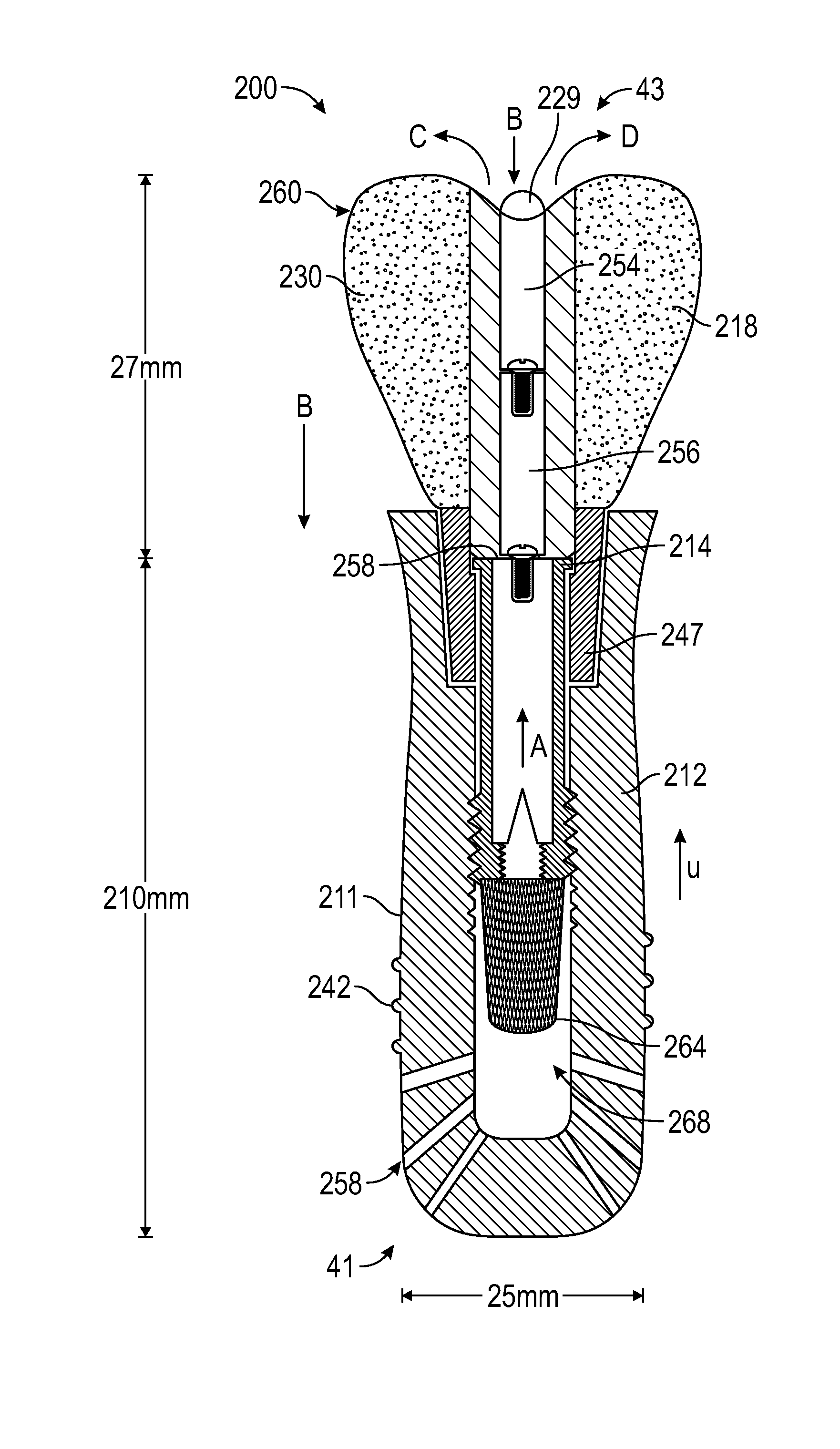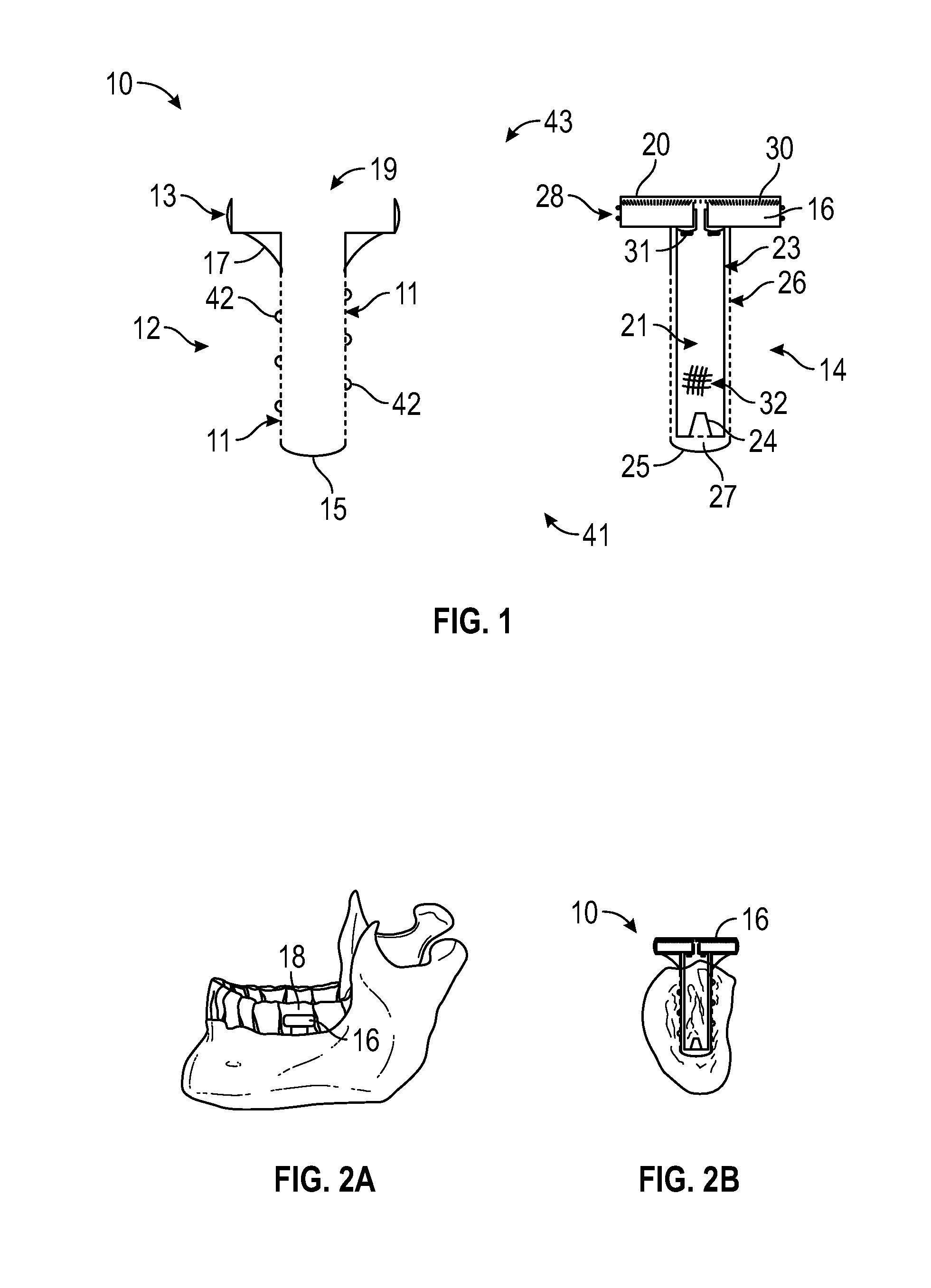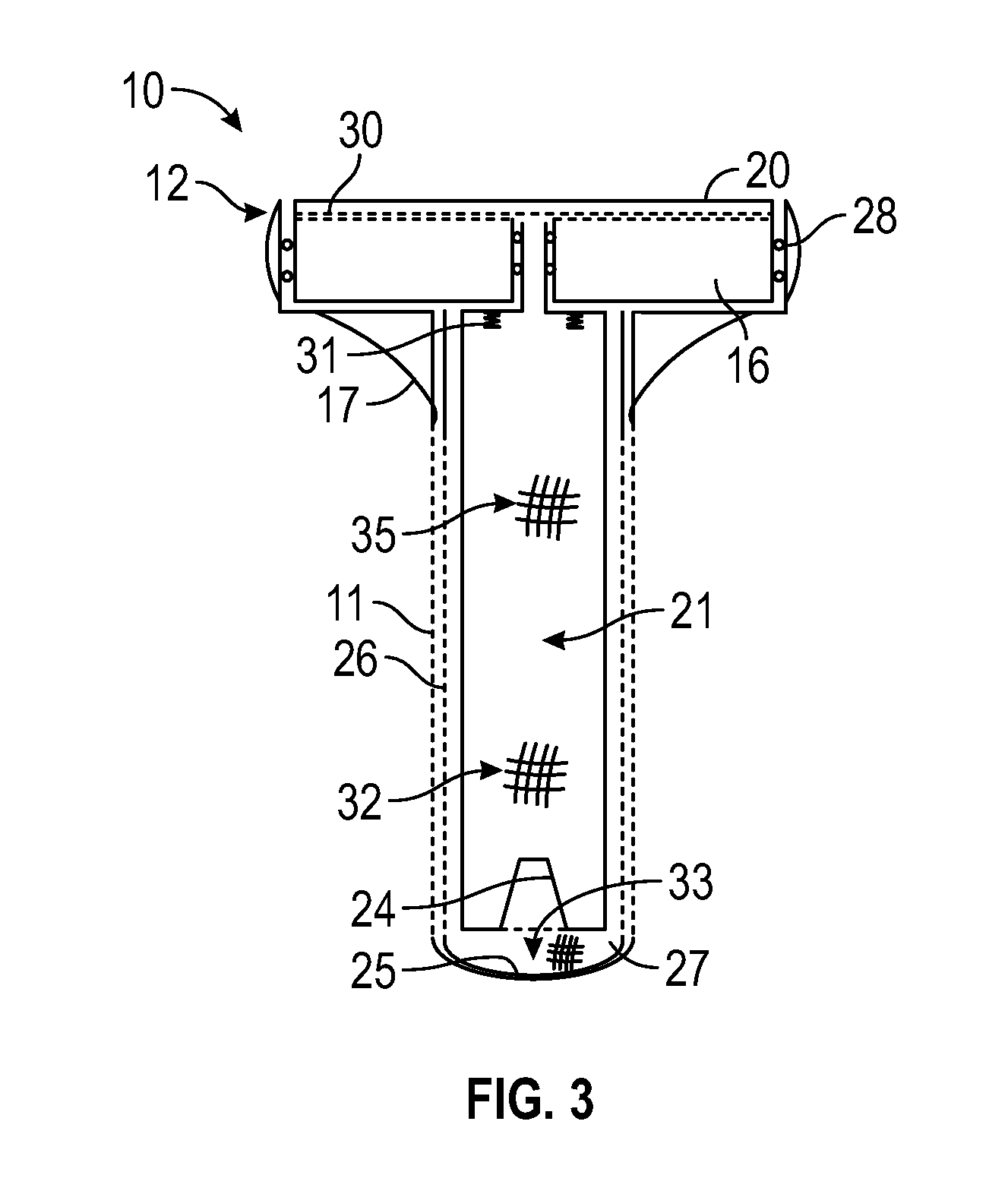Artificial Salivary Gland
a salivary gland and artificial technology, applied in the field of artificial salivary gland devices or assemblies, can solve the problem that no other technology can generally restore normal salivary flow, and achieve the effect of restoring normal salivary flow, constant background rate, and higher rate during eating
- Summary
- Abstract
- Description
- Claims
- Application Information
AI Technical Summary
Benefits of technology
Problems solved by technology
Method used
Image
Examples
example 1
[0118]Based on results from an in vivo rabbit study it is noted that: (i) sufficient interstitial / marrow fluid exists for the exemplary assemblies (e.g., assemblies 10, 100, 200) to work, likely with only one implant / assembly (e.g., 10, 100, 200) needed per patient; (ii) there is some positive fluid pressure available necessitating a lower vacuum pressure in the assembly (e.g., 25% to 50% of atmospheric was sufficient to extract 0.05 milliliters of fluid per minute); (iii) the implant wall (e.g., wall 11) does not need to be significantly porous, a limited number of small holes (e.g. approximately 30 holes at 0.5 mm diameter in wall 11) may be sufficient; (iv) holes in wall 11 may not need to be obturated at the first surgery.
[0119]FIGS. 14-17 are photos / images showing an exemplary prototype used in an initial rabbit study. These prototypes were made in a machine shop by hollowing-out an implant member (e.g., Straumann implant, 12 mm, 4.1 mm), adding holes in the endosseous portion,...
PUM
 Login to View More
Login to View More Abstract
Description
Claims
Application Information
 Login to View More
Login to View More - R&D
- Intellectual Property
- Life Sciences
- Materials
- Tech Scout
- Unparalleled Data Quality
- Higher Quality Content
- 60% Fewer Hallucinations
Browse by: Latest US Patents, China's latest patents, Technical Efficacy Thesaurus, Application Domain, Technology Topic, Popular Technical Reports.
© 2025 PatSnap. All rights reserved.Legal|Privacy policy|Modern Slavery Act Transparency Statement|Sitemap|About US| Contact US: help@patsnap.com



